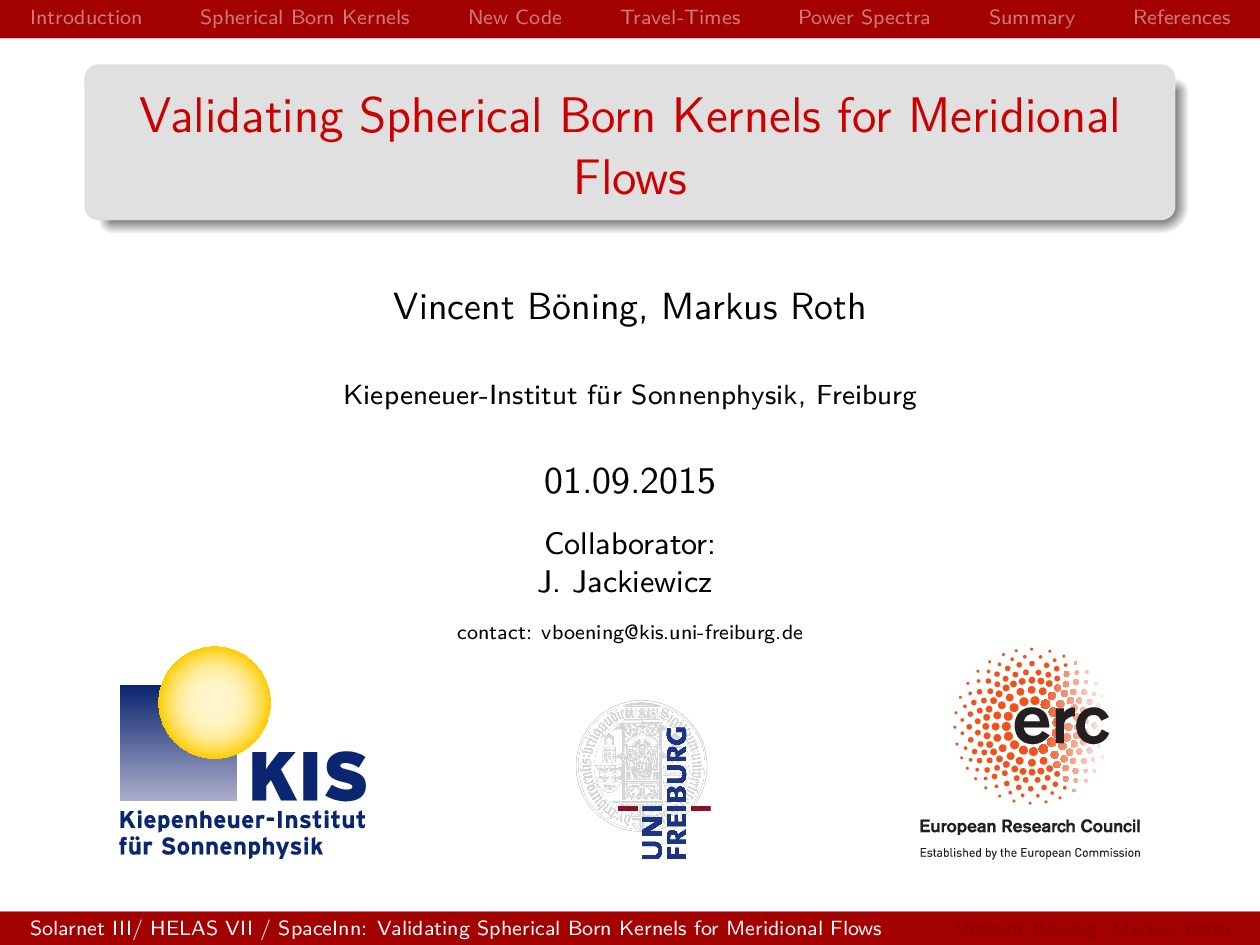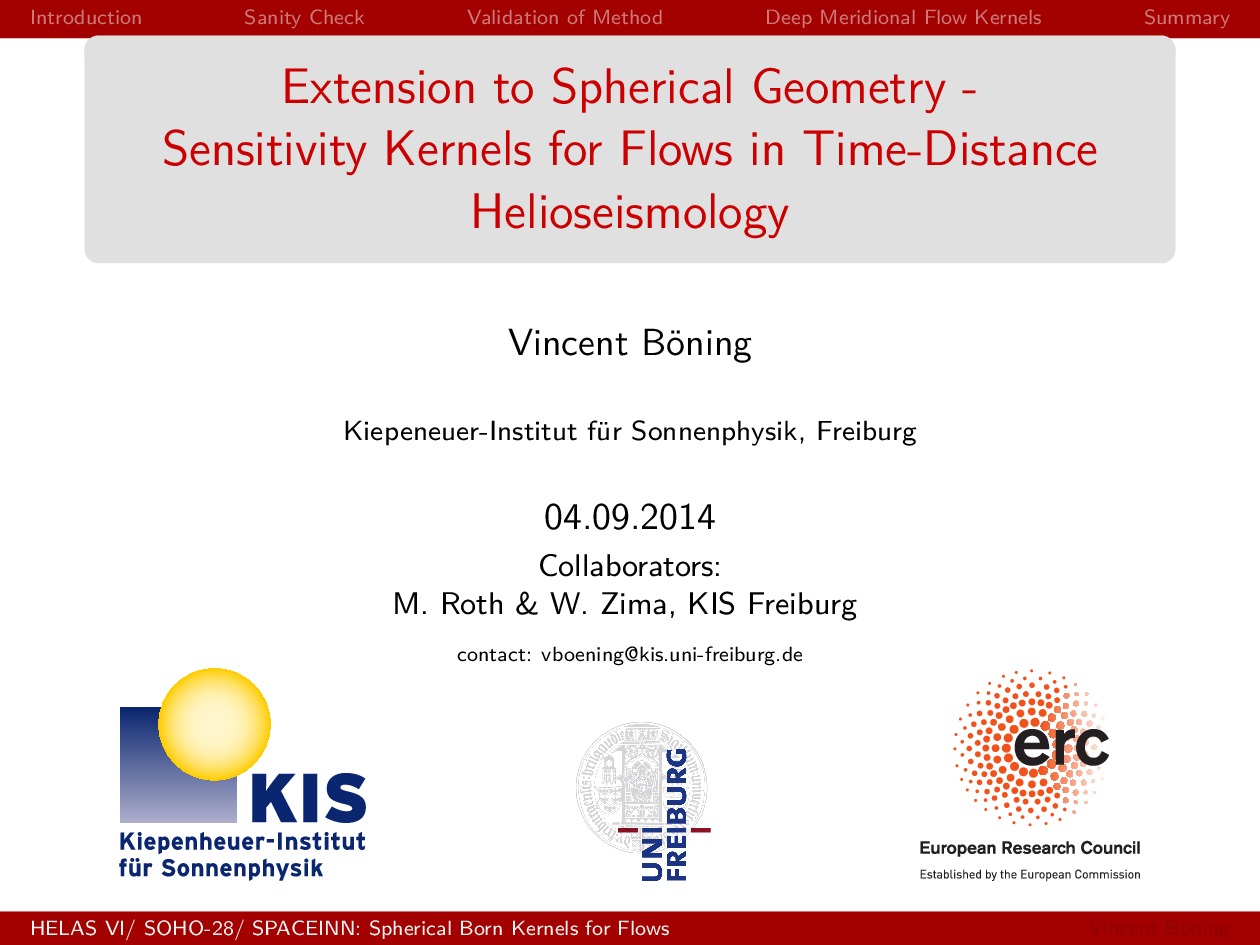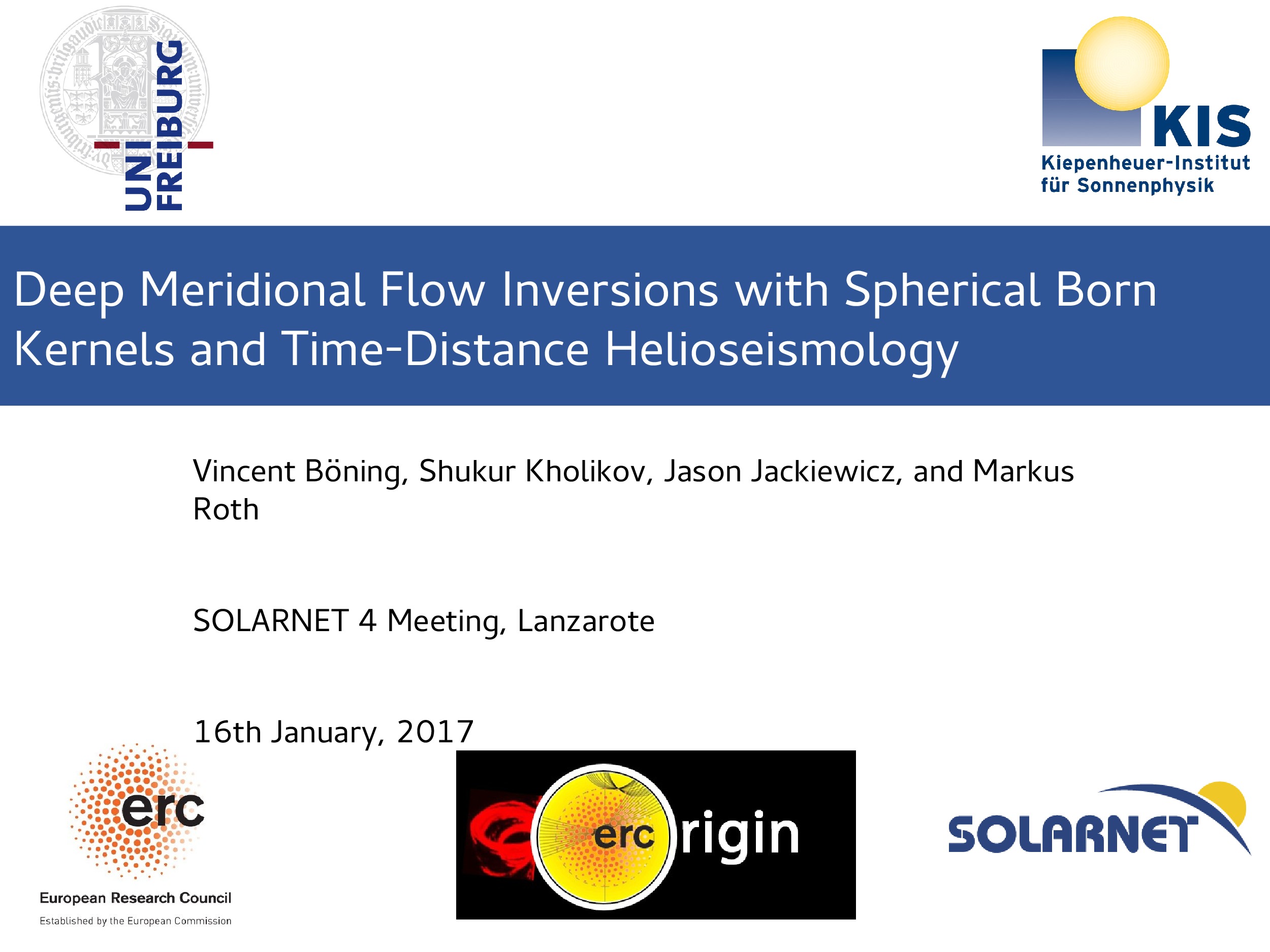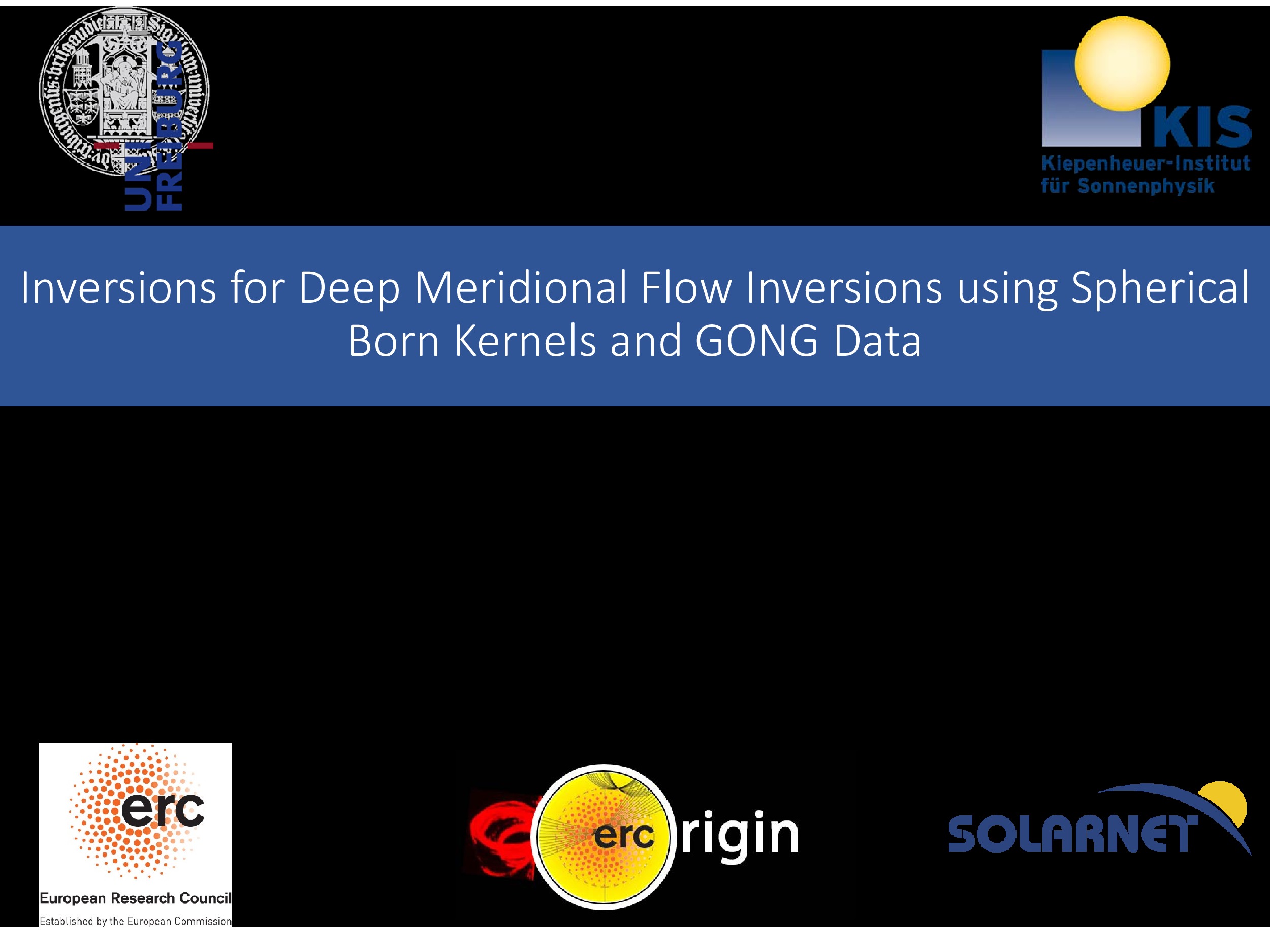Date of upload:
06.07.2017
Co-author:
Markus Roth, Jason Jackiewicz, Shukur Kholikov
Abstract:
The solar meridional flow is a crucial ingredient to modern dynamo theory. Seismic estimates of
this flow have, however, been contradictory in deeper layers below about 0.9Rsun. Results from time-distance helioseismology have so far been obtained using the ray approximation. Here, we perform inversions using the Born approximation. The initial result is similar to the result previously obtained using ray kernels by Jackiewicz et al. (2015), while using the same set of GONG data and the SOLA inversion technique. However, we show that the assumption of uncorrelated measurements used in earlier studies may lead to inversion errors being underestimated by a factor of about 2 - 4. In a second step, refined inversions are performed using the full covariance matrix and a regularization for cross-talk. As the results are found to depend on the threshold used in the singular value decomposition, they were obtained for a medium threshold (10^−7 to 10^−5 , about 50% of values used) and a threshold lower by a factor of 10 (about 70% of values used). The result obtained with the medium threshold is again similar to the original, with less latitudinal variation. However, using the lower threshold, the inverted flow in the southern hemisphere shows two or three cells stacked radially depending on the associated radial flows. Both the single-cell and the multi-cell profile are consistent with the measured travel times. All our results confirm a shallow return flow at about 0.9Rsun. Corresponding paper to appear in ApJ.



